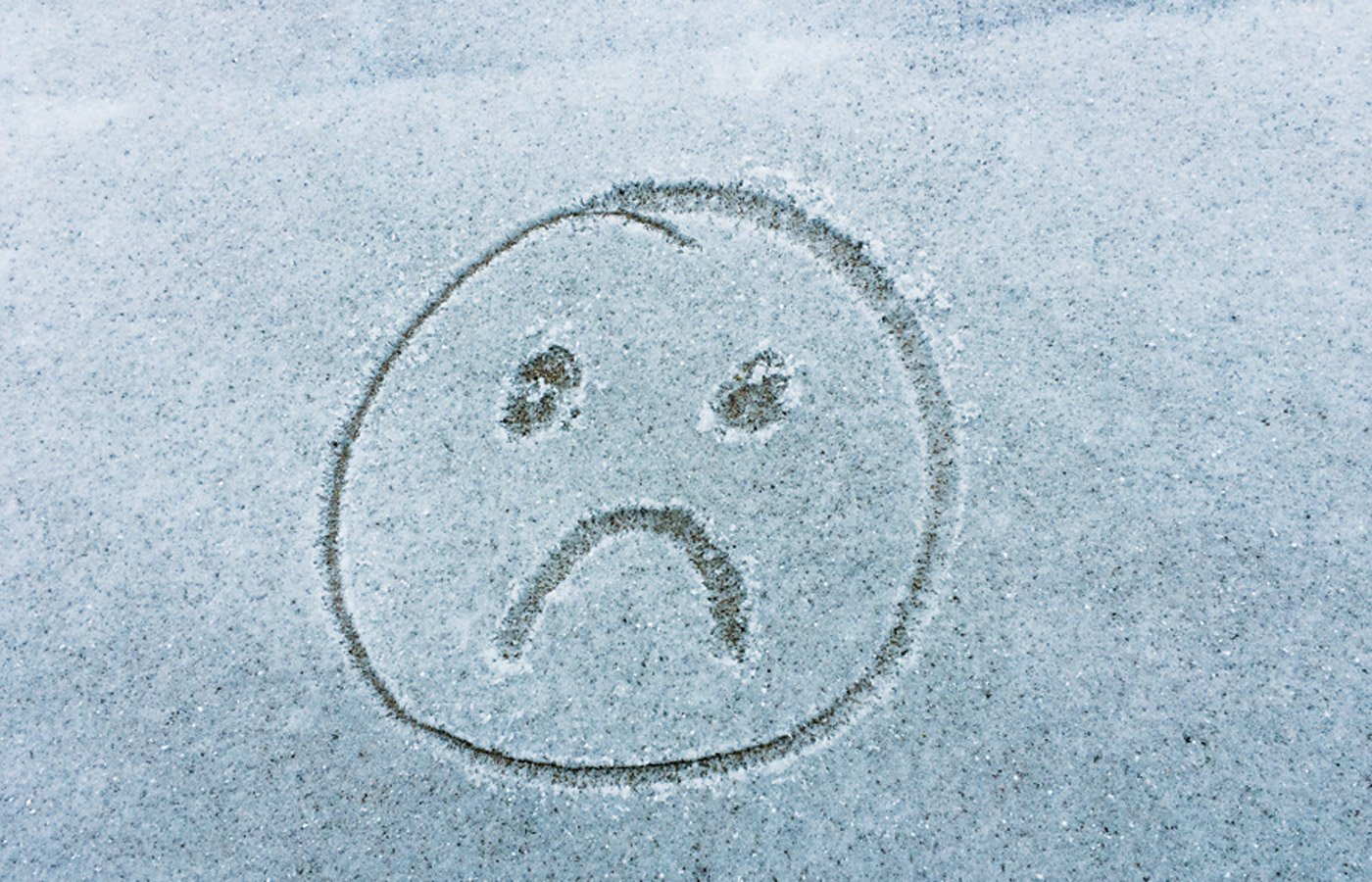LISTEN TO THIS ARTICLE:
Seasonal Affective Disorder (SAD) is a subtype of depression that appears most strongly in certain times of the year. The diagnosis is also called Major Depressive Disorder with Seasonal Pattern. Symptoms usually arise in the late fall or early winter. This is called winter-pattern SAD. However, some people can experience depressive episodes during the spring and summer, which is summer-pattern SAD.
What is Seasonal Affective Disorder?
People with Seasonal Affective Disorder experience mood changes that affect how they feel, think, and behave. The symptoms of SAD closely resemble those of a major depressive episode. This involves persistent feelings of sadness, loss of feelings of pleasure, changes in weight or sleep, fatigue, worthlessness or guilt, and difficulty concentrating. In the most severe cases, people suffer from suicidal thoughts.
Symptoms of Seasonal Affective Disorder typically last for about 4−5 months out of the year. Winter-pattern SAD, most prevalent in the fall and winter, is more common than its counterpart, summer-pattern SAD. For winter-pattern SAD, additional symptoms include oversleeping, overeating, and social withdrawal. In contrast, summer-pattern SAD may bring symptoms like insomnia, poor appetite, restlessness, and anxiety.

What causes Seasonal Affective Disorder?
Sun, serotonin, and melatonin
While the exact cause of Seasonal Affective Disorder remains unclear, theories suggest a connection between sunlight deficiency and hormonal changes. Sunlight influences important hormones like serotonin and melatonin, which help regulate the body’s circadian rhythm. Reduced sunlight during fall and winter results in serotonin deficiency. This could lead to the impacts on mood and personality that people with winter-pattern SAD experience. Additionally, vitamin D deficiency, exacerbated in winter, may further impact serotonin activity.
The serotonin hypothesis helps explain the role of serotonin in regulating sleep-wake cycles and their correlation with mood. Genetic factors, including a gene for a serotonin receptor, also play a role in SAD, indicating a seasonal variation influenced by genetics.
Additionally, people with winter-pattern Seasonal Affective Disorder have higher melatonin levels, which further contributes to fatigue, relaxation, and sleep disturbances. Conversely, those with summer-pattern SAD may have lower melatonin levels.
SAD vs “holiday blues”
It’s important to differentiate between Seasonal Affective Disorder and the holiday blues. The holiday blues are the result of stress and anxiety related to the holiday season. In contrast, winter-pattern SAD is only due to the changing daylight hours, not the particular holidays that coincide with that time.
Risk factors
SAD is more common in areas that experience significant seasonal changes. In these places, young adults and women are the most susceptible. Factors such as hormonal changes, a history of depression, and geographical location all contribute. Countries at higher altitudes, like Sweden, have higher rates of SAD, which is also termed “winter depression.”
Diagnosing Seasonal Affective Disorder
Diagnosing Seasonal Affective Disorder involves assessing whether an individual meets specific criteria. The DSM-5 criteria for depressive episodes, seasonal patterns, and tools like the Seasonal Pattern Assessment Questionnaire (SPAQ) help doctors make an accurate diagnosis.
1. Depressive symptoms:
These resemble those of a major depressive episode:
- Depressed mood
- Loss of interest in previously enjoyed activities, also called anhedonia
- Appetite changes
- Trouble falling or staying asleep
- Irritability or restlessness
- Lack of energy
- Hopelessness or guilt
- Poor concentration
- Thoughts of suicide
For winter-pattern SAD, additional symptoms include:
- Oversleeping (hypersomnia)
- Overeating
- Social withdrawal
For summer-pattern SAD, additional symptoms include:
- Trouble sleeping (insomnia)
- Poor appetite
- Restlessness and agitation
- Anxiety
- Aggression
2. Seasonal Recurrence:
These depressive episodes occur during specific seasons (winter or summer) for at least 2 consecutive years.
3. Seasonal Frequency:
More frequent depressive episodes happen during the specific season compared to other times of the year.
Treatment Options for SAD
Several treatment modalities exist for managing Seasonal Affective Disorder. People can benefit from starting treatments before the fall or spring to prevent or reduce depressive symptoms.
Light Therapy
This involves exposure to a bright light box for about 30-45 minutes daily, typically in the morning. This compensates for reduced natural sunlight during darker months. The bright light helps reduce SAD symptoms by influencing serotonin levels and maintaining circadian rhythms. This treatment is particularly effective for winter-pattern SAD.
Psychotherapy
There is a special form of Cognitive Behavioral Therapy (CBT) that was adapted for SAD, known as CBT-SAD. This helps people challenge negative thoughts related to the season. It also uses behavioral activation, which helps individuals identify and schedule engaging activities to counteract seasonal loss of interest.
Antidepressant Medication
Selective serotonin reuptake inhibitors (SSRIs) can help address disturbances in serotonin activity associated with SAD. Additionally, bupropion, another type of antidepressant, is FDA-approved for preventing seasonal depressive episodes.
Vitamin D
Supplements may help, especially for people with winter-pattern SAD who have vitamin D deficiency. However, studies on the effectiveness of vitamin D in treating SAD yield mixed results.
Seeking help
The unique pattern and symptoms of Seasonal Affective Disorder can make it tricky to recognize and treat. Understanding the causes and risk factors of SAD helps people manage their symptoms and find treatments to improve how they feel. If you or someone you know is struggling with SAD or depressive symptoms, seeking help from a healthcare professional is essential for getting better.


 Learn
Learn Read Stories
Read Stories Get News
Get News Find Help
Find Help
 Share
Share
 Share
Share
 Share
Share
 Share
Share



